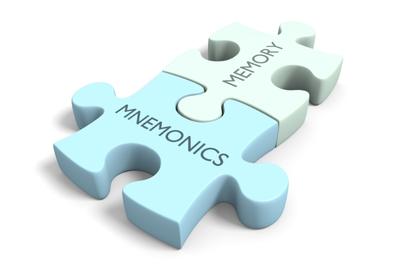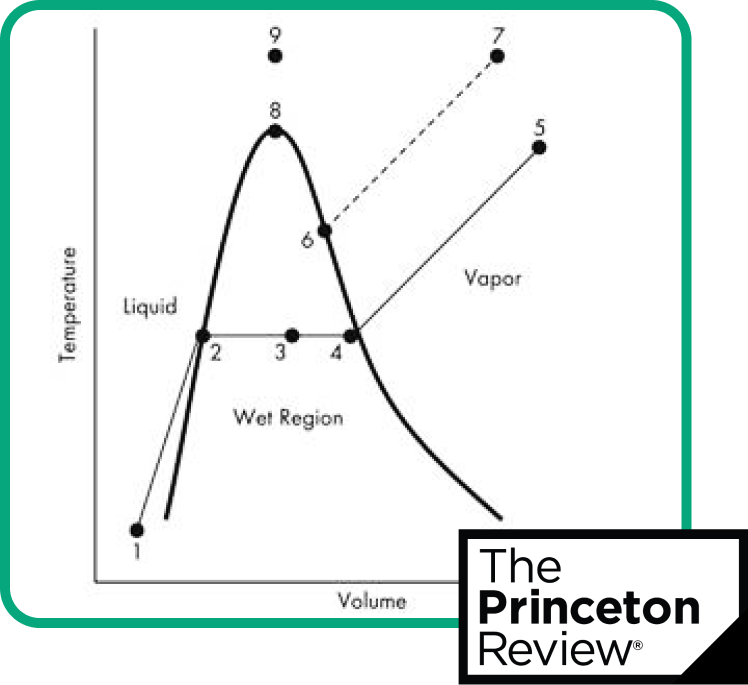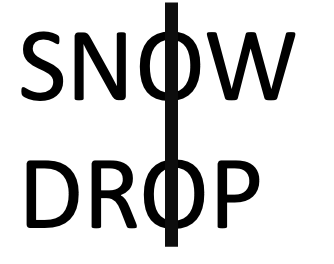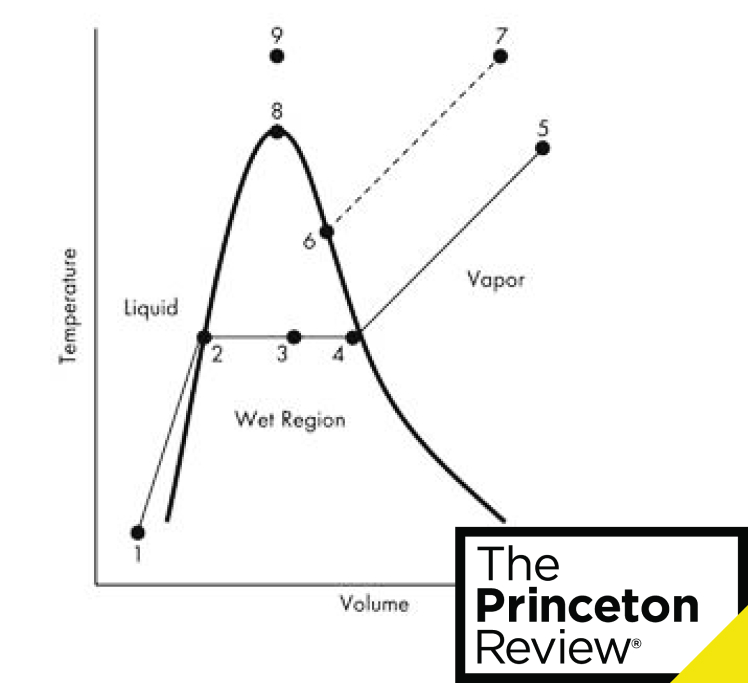
The MCAT isn't really a test of memorization; it's a test of application of knowledge. For instance, you are far more likely to be asked to identify what stage of cognitive development a child is in than to name those four stages. But there are some things you just need to stick in your brain, and mnemonics—memory tricks—can help with that. Here are some unique phrases and gimmicks to help you remember things on each section of the MCAT.

MCAT Self-Paced
14-Day Trial
500+ hours of video lessons
17 practice tests
4,900+ practice questions
Official AAMC materials
Biology
-
CUT the PY to remember the DNA and RNA bases that are PY rimidines… Cytosine, Uracil, and T hymine.
-
Pur e A s G old to remember the PURine bases… Adenine and Guanine.
-
To remember the STOP codons: UAA, UGA , UAG … “ U A re Annoying, U G o A way, U A re G one.”
-
To remember the type of RNA produced by the different eukaryotic RNA polymerases, remember that the names “RNA Pol I”, “RNA Pol II”, and “RNA Pol III” are useless, meaningless, empty information. They are EMPTY information… they R M T : Pol I for r RNA, Pol II for m RNA, and Pol III for t RNA.
-
I P ee on the MAT to remember the phases of the cell cycle: I nterphase, P rophase, M etaphase, A naphase, and T elophase.
-
To remember the atrioventricular valve names and which side of the heart they are in, remember LAB RAT : L eft A trium B icuspid, R ight A trium T ricuspid.
-
FLAT PiG helps you remember the hormones secreted by the anterior pituitary gland: F SH, L H, A CTH, T SH, P rolactin, (the “i” is little so you can ignore it), Growth hormone.
-
To remember that sodium levels are high outside a cell and potassium levels are high inside a cells, remember a salty banana : bananas have a lot of potassium and if you cover them in salt they are salty outside.
Biochemistry


-
There are two ways to remember what happens to electrons during oxidation or reduction: O IL RIG ( O xidation I s a L oss, R eduction I s a G ain) or LEO the lion says GER ( L oss of E lectrons is O xidation, G ain of E lectrons is R eduction). These work well for General Chemistry and Organic Chemistry too!
-
To remember the hydrophobic amino acids, remember the phrase GAV e LIF e W ith M y P artner. PI cture yourself going with your partner to donate blood… GAVLIFWMP.
-
For the charged amino acids, picture a medieval battle between dragons and knights charging at them on horses: D ragons E at K nights R iding H orses… DEKRH
-
To remember the aromatic amino acids, say WFY quickly… it sounds like “wifey”, and that’s why you put a ring on it!
-
To remember the type of blotting and what is being tested on the blot, write the words SNOW DROP on top of each other, like this:

-
Now, cancel out the Os because they are the same:

-
A S outhern blot is to test D NA, a N orthern blot is to test R NA, and a W estern blot is to test P roteins.
Physics
-
To remember the trigonometry S ine, C osine, and T angent ratios: SOH CAH TOA . S ine = O pposite over H ypotenuse, C osine = A djacent over H ypotenuse, and T angent = O pposite over A djacent.
-
Vectors add " tip to tail ".
-
Speed is a S calar, V elocity is a v ector.
-
ROY G B i V for the visible spectrum: R ed, O range, Y ellow, G reen, B lue, V iolet.
General Chemistry
-
To remember the order of most electronegative elements to least electronegative in covalent compounds, remember FONClBrISCH … F luorine, O xygen, N itrogen, C h l orine, Br omine, I odine, S ulfur, C arbon, and H ydrogen. And remember that the first three can hydrogen bond! (This one is good for OC hem too.)
-
Remember the phrase Goldfish are Horrible Without T artar S auce, to remember the equation for Gibbs Free Energy: ΔG = ΔH – TΔS.
-
To remember the heat transfer equation q = mcΔT , remember m CAT .
-
Remember the phrase “ So I B rought No Cl ean Clo thes” to remember the strong acids: H2 S O4, H I , H Br , H NO 3, H Cl , H ClO 4.
Organic Chemistry
-
To remember the correct type for naturally occurring amino acids and carbohydrates think of the name of two major cities on opposite sides of the United States, Los Angeles (LA) and Washington, District of Columbia ( DC ). This stands for L Amino acids and D Carbohydrates.
-
When looking at a TLC plate (thin-layer chromatography) remember “ polar is lower and slower ” (polar compounds move more slowly up the plate and are lower on the plate than nonpolar compounds).
-
A Furanose is a F ive-membered ring.
-
“It’s better to B UP !!” to remember that the hydroxyl group points UP in a β anomer.
-
For the four things that increase a molecule’s stability, remember that cowboys have hard, early days. They must RISE and go to the STABLE : R esonance, I nduction, S ize, and E lectronegativity (basically, anything that minimizes charge).
-
To quickly locate a hemia C etal or a C etal group in a molecule, look for a C between two O atoms: O–C–O. To locate an ether group, look for an O between two C atoms: C– O –C (think “it’s ether this C O r that C”).
-
To orient yourself with NMR spectroscopy signals, remember that D eshielded signals are more D ownfield (they have higher ppm values).
MCAT Self-Paced
14-Day Trial
Discover firsthand what makes us stand out.
No commitment required

Psychology and Sociology
-
To remember Piaget’s stages of cognitive development, remember that S ome P eople C an F ly: S ensorimotor, P re-operational, C oncrete operational, and F ormal operational.
-
The McCrae and Costa Five-Factor Model of personality traits can be remembered with the word OCEAN : O penness to experience, C onscientiousness, E xtroversion, A greeableness, and N euroticism.
-
Erikson's Psychosocial Development Theory contains eight stages of development. They are:
-
Trust vs Mistrust
-
Auto nomy v Shame and Doubt
-
In itiative v Guilt
-
Industry v Inferiority
-
Identi ty v Role Confusion
-
Intima cy v Isolation
-
Gen erativity v Stagnation
-
Integrity v Despair
-
-
The name and the order can be remembered using this simple phrase: “Trust the auto insurance industry; identify with intimate geniuses with integrity”. It can also help to see it vertically:
-
TRUST the
-
AUTO
-
IN surance
-
INDUSTRY ,
-
IDENTIf y with
-
INTIMATE
- GEN iuses with
- INTEGRITY
-
-
This helps solidify the order of the stages, and it also jogs your memory regarding the first word of each stage.
-
Positive and negative reinforcement/punishment. First, remember that RE inforcement is a RE ward (and by definition it is pleasant), and p UN ishment is UN pleasant. For the positive/negative aspects, remember positive = + sign, negative = – sign. When you see the word "positive" on the MCAT, visualize the "+" sign on a calculator; it means a stimulus is being added to the situation. When you see the word “negative”, it means a stimulus is being subtracted or removed from the situation. So, putting it together, positive reinforcement means you are adding a stimulus, and the outcome is rewarding . Negative reinforcement means you are removing a stimulus and the outcome is rewarding . Positive punishment means you are adding a stimulus and the outcome is unpleasant. Negative punishment means you are removing a stimulus and the outcome is unpleasant.
Try coming up with your own mnemonics! The key, as you've seen above, is to make up a memorable phrase or word out of the parts of what you're trying to remember.
Mnemonics can be a good way to stick information into your brain so that you can apply it when asked about it.
Explore Graduate Programs for You
Explore our featured graduate schools & programs to find those that both match your interests and are looking for students like you.
Best Law Schools
Check out our complete list of 168 law schools, based on surveys of school administrators and over 17,000 students.
Search for Medical Schools
Visit our Med School Hub to explore med schools with our ‘Find Your Med School’ filtered search or visit our Med School Advice pages for info about good MCAT scores or interview question prep.

Find MBA Programs Matched to Your Interests
Explore our featured business schools to find those that are looking for students like you.
Explore Graduate Programs for You
Explore our featured graduate schools & programs to find those that both match your interests and are looking for students like you.
Best Law Schools
Check out our complete list of 168 law schools, based on surveys of school administrators and over 17,000 students.
Search for Medical Schools
Visit our Med School Hub to explore med schools with our ‘Find Your Med School’ filtered search or visit our Med School Advice pages for info about good MCAT scores or interview question prep.

Find MBA Programs Matched to Your Interests
Explore our featured business schools to find those that are looking for students like you.
Explore Graduate Programs for You
Explore our featured graduate schools & programs to find those that both match your interests and are looking for students like you.
Best Law Schools
Check out our complete list of 168 law schools, based on surveys of school administrators and over 17,000 students.
Search for Medical Schools
Visit our Med School Hub to explore med schools with our ‘Find Your Med School’ filtered search or visit our Med School Advice pages for info about good MCAT scores or interview question prep.

Find MBA Programs Matched to Your Interests
Explore our featured business schools to find those that are looking for students like you.


